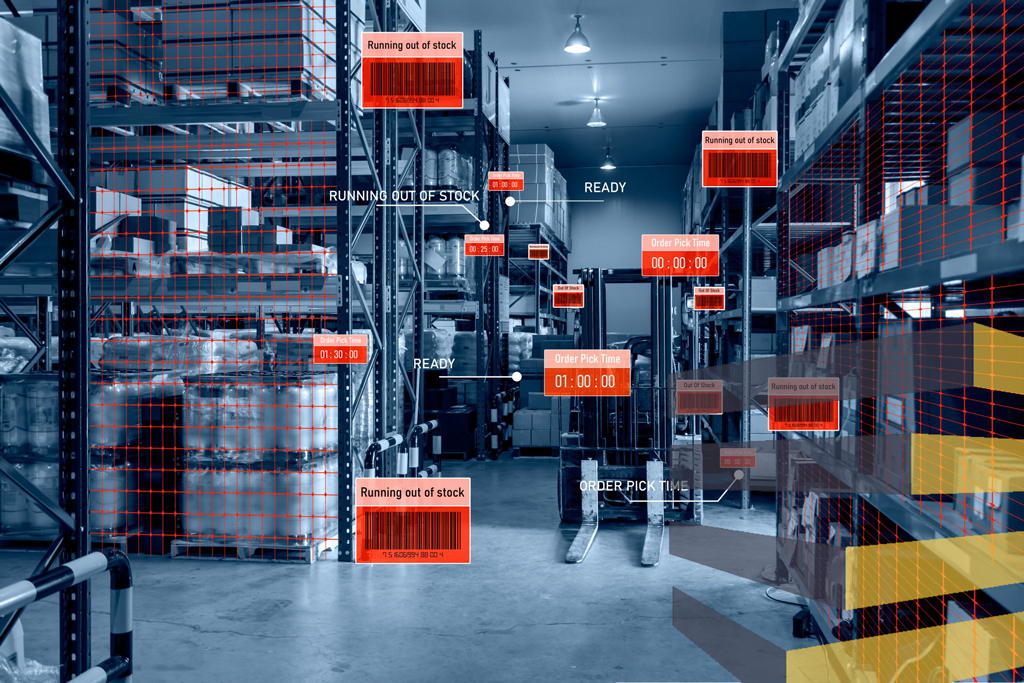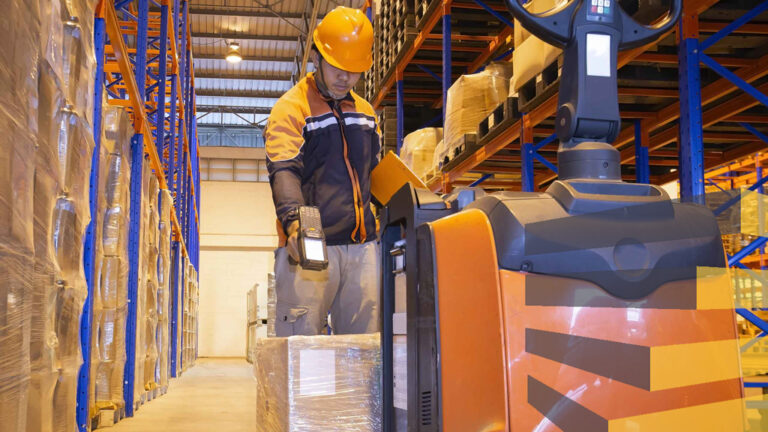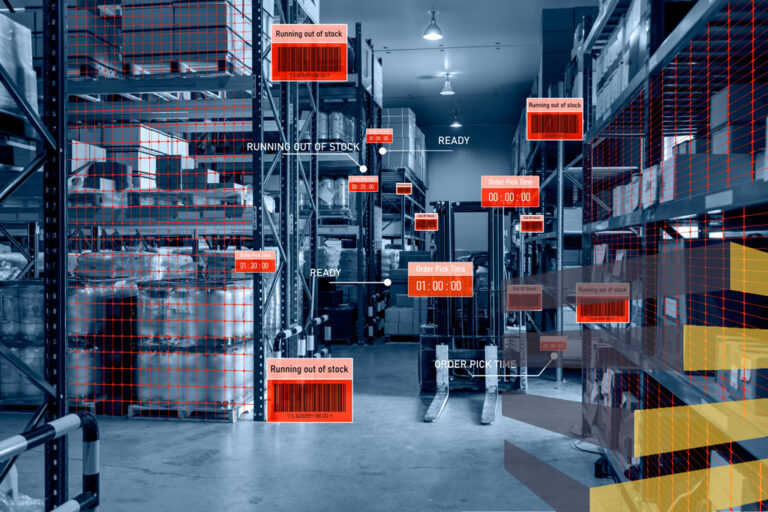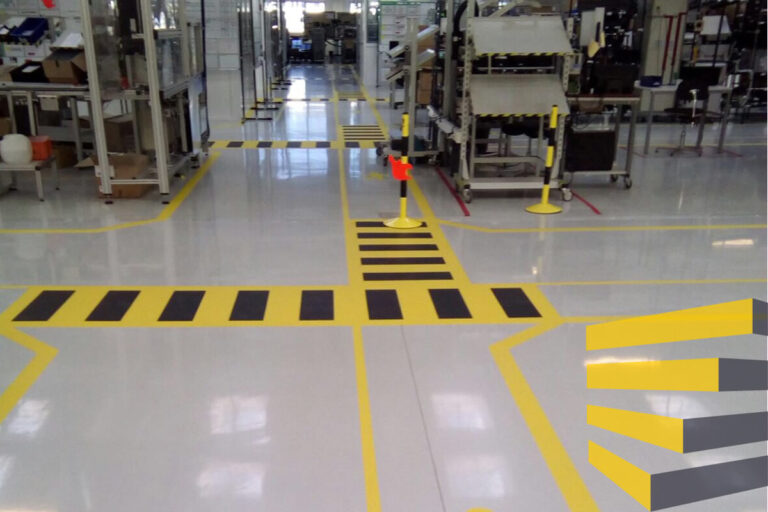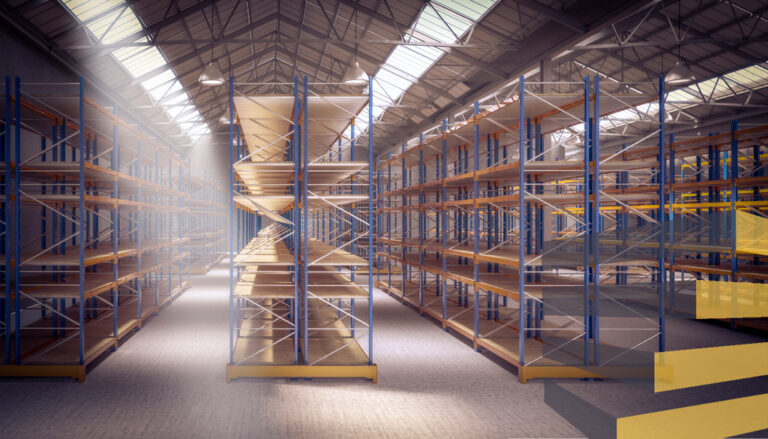Table of Contents
Creating a well-designed labeling system using the correct label types is an important part of any warehouse optimization process, helping to boost productivity and reducing errors.
Choosing the right warehouse label types to best meet your needs means taking several factors into account, including where those labels will be placed, what information they need to contain, and the conditions they must endure.
As such, labeling is often a significant additional consideration when developing a warehouse layout design, which you may want to seek expert assistance on, to guarantee you get it right.
Contact us if you need labels in Brazil, Mexico, or the United States, or to find out more about our other warehouse optimization services.
Key considerations on warehouse label types
Labels are used throughout warehouses and distribution centers to provide key information to people working in the space. That can include details of item locations, stock levels and handling instructions, among other things. Different label types can be found on racks, shelves, and floors, as well as being hung.
Information on labels is often stored in barcodes, QR codes or SKU codes, and which type of coding is most suitable will usually depend on the amount of information it has to contain. QR codes, for example, are ideal for storing large amounts of information, but may be slightly harder to scan than barcodes.
When creating a labeling system, it should ideally include a uniform structure for organizing the information, which can be replicated throughout the operation. Choosing the correct label types to support this will also mean considering how and where labels must be read.
Given the demands put on labels in many facilities, it is almost always essential to use high-quality materials that will guarantee the ongoing legibility of the information they contain. However, just how high-quality they need to be will depend on the conditions they will be kept in and the amount of use they will get.
If you are in the process of designing a new labeling system, a warehouse setup consultant could provide you with valuable guidance based on their extensive past experience.
4 common warehouse label types
Some of the most common label types used in warehouse and distribution centers include the following:
1) Rack labels
Rack labels help warehouse personnel locate and manage inventory quickly and accurately, which translates into better overall warehouse performance.
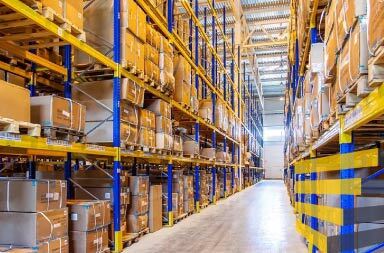
As the name suggests, rack labels are placed on racks and will generally include information on the type and quantity of goods to be found on a particular rack.
2) Item labels
Labels can be used on individual items, allowing personnel to guarantee that they are picking the rights goods, as well as helping keep track of overall stock.
Items labels will often contain important information related to the item they are placed on, including stock volume and any instructions related to handling.
3) Hanging labels
These labels usually include barcodes, QR codes or SKU codes and allow quick identification and scanning from considerable distances, improving operational efficiency and inventory management.
Hanging labels will usually contain information related to an entire area of a warehouse, be that an aisle or a cordened off area being used to compile goods before it is moved elsewhere.
4) Floor labels
Floor labels come in a variety of forms, including easily removed peel-off adhesive and more permanent bolt-on floor labels, while a middle option is aluminum framed labels.
Floor labels will generally contain information related to the aisle or area that they appear in or near, and can be used as an alternative to rack labels in areas where goods are stored on the floor.
Warehouse label types: pros and cons of different materials
Different warehouse label types will often use different materials, based on the conditions they are being used in. Getting the materials right when choosing labels can be key to guaranteeing they have the longest lifespan possible.
Some common materials for labels include:
1) Polyester
Polyester labels are durable, water resistant and difficult to tear, making them ideal for many conditions found both inside and outside a warehouse.
That makes these label types a popular choise for for high-traffic areas or on items that require long-lasting identification. Polyester label be colored, clear, or metalized.
2) Magnetic
Magnetic labels can be easily moved and repositioned, meaning they are ideal for use with goods that will move around, or in facilities that see workflows regularly modified..
Of course, magnetic labels will generally be more expensive than other types of labels, but that additional cost will be offset by their longlasting use in dynamic environments.
3) Paper
Paper labels are a cost-effective option suitable for various applications, including product labeling, shelf labeling, and temporary signage. The obvious downside compared to other label types is that they will not last long and are generally single use.

Paper labels are therefore ideal for short-term use or low-humidity storage areas. Their lifespan can be increased with the use of protective covers or laminate.
4) Vinyl
Vinyl labels have high UV resistance, as well as be being able to endure varied conditions and contact with some chemical, makinf them an ideal choice for use outdoors, or on items that may be stored outdoors.
The flexible and pliable nature of these labels also extends to the range o surfaces they can be easily stuck to, making them a good option for general use — albeit less cost-effective than the likes of paper labels.
5) Thermal
Thermal labels are widely used in cold storage warehouses thanks to their resistance to extremely low temperatures and ability to withstand exposure to moisture, chemicals, and other challenging conditions.
Information on these label types is either direct thermal or thermal transfer, with the former not requiring ink or ribbons to be produced, but generally less durable than the latter.
Serviap Logistics supplies warehouse labels
At Serviap Logistics, we offer a wide range of warehouse optimization and support services across Brazil, Mexico, and the United States, including supplying labels.
As well as offering a wide range of labels types, our porfolio of services includes supplying and installing signage, racking, collision barriers and floor marking. We additionally offer industrial cleaning services, as well as equipment inspection and floor maintenance.
Through our years of experience we have developed a reputation for being able to hit tight deadlines without sacrificing quality or safety and we count some of the biggest and best-knwon companies in the world among our satisfied clients.
Everywhere we work, we are committed to upholding the highest standards, including those established by ABNT and MTE in Brazil, those set out under Mexico’s NOM regulations, and regulations overseen by OSHA in the United States.
Contact us to find out more about how we can assist you.



